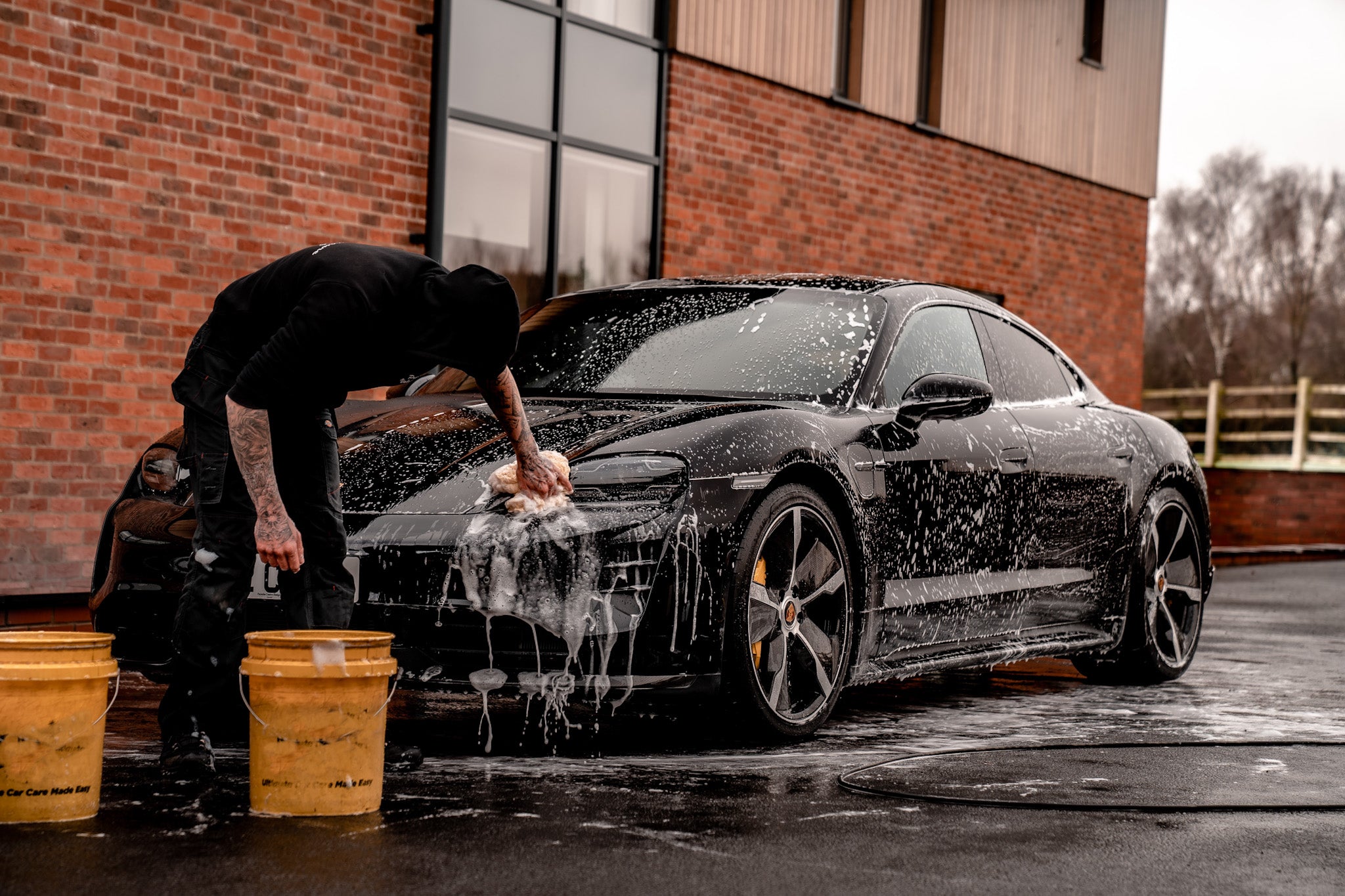Unveiling the Science Behind Ceramic Coatings: Exactly How Does It Job and Why Is It Above Standard Choices?
Ceramic layers have been gaining popularity in numerous industries for their exceptional efficiency and sturdiness. Recognizing exactly how ceramic layers job and why they exceed traditional alternatives is critical for those looking for to boost the long life and durability of their materials.
The Chemistry of Ceramic Coatings
In comprehending ceramic coatings, diving into the elaborate chemistry behind their structure is important for understanding their performance and resilience. Ceramic coverings are mainly composed of silicon dioxide (SiO2), which forms a protective and solid layer when related to various surface areas. This chemical structure provides remarkable resistance to warmth, chemicals, and deterioration, making ceramic finishings extremely demanded for a wide range of applications.
The chemistry behind ceramic layers involves the development of covalent bonds between silicon and oxygen atoms, creating a stiff network that boosts the finish's strength and durability. In addition, the presence of other elements such as zirconium, titanium, and aluminum additional enhances the finishing's residential or commercial properties, providing raised firmness and adhesion to surface areas.
Comprehending the chemical make-up of ceramic finishes allows for the personalization of formulas to fit particular demands, whether it be for auto, industrial, or domestic functions. By utilizing the power of chemistry, ceramic coatings remain to lead the means for premium protection and efficiency in numerous markets.
Benefits of Ceramic Coatings

As an outcome, ceramic finishings make cleansing and preserving surfaces much less complicated and much less taxing. Overall, the wide range of advantages provided by ceramic finishings make them a superior choice compared to typical covering approaches.
Exactly How Ceramic Coatings Bond
Ceramic finishings bond to surface areas through a procedure that entails molecular bond and chemical interactions. When a ceramic finishing is related to a surface area, it creates a strong bond by chemically adhering to the surface at a molecular degree. This bond is created through the development of covalent bonds, which are very solid and sturdy. The ceramic covering's molecules permeate the pores of the surface area, producing a limited hold that stands up to splitting up.
In addition, the chemical interactions in between the ceramic finish and the surface area additionally boost the bond. ceramic coatings san jose. These communications permit the ceramic covering to create a continuous and smooth layer on the surface area, giving superb security and resilience. Unlike standard finishes that may rest on the surface area without fully bonding, ceramic coatings develop an irreversible bond that is immune to chemicals, UV rays, and harsh environmental problems

In essence, the bonding mechanism of ceramic finishings makes sure a durable and reliable safety layer that exceeds standard coating choices. This remarkable bond adds to the sturdiness, scratch resistance, and durability of ceramic layers, making them a preferred option for various applications.
Toughness of Ceramic Coatings
The remarkable durability of ceramic layers originates from their robust molecular attachment and chemical interactions with surfaces, guaranteeing a resilient protective layer that goes beyond standard coating options. When applied, ceramic coverings form a solid bond with the substratum, creating a resistant obstacle against various environmental stress factors such as UV radiation, chemicals, and abrasions. This bond is so protected that it can endure the rigors of daily usage without weakening or breaking down swiftly.
Unlike typical coatings that may break down over time, ceramic finishings maintain their integrity for an extensive duration, giving durable protection for the underlying surface. In general, the outstanding sturdiness of ceramic coverings makes them a premium selection for shielding a vast variety of surfaces in numerous applications.
Ceramic Coatings Vs. Typical Options
In contrast to conventional coating approaches, ceramic coverings provide an unique mix of toughness and safety capacities that set them apart in various surface area security applications. Conventional alternatives such as wax or sealants you can check here provide a momentary layer of security that can disappear rapidly, calling for frequent reapplication. On the various other hand, ceramic layers develop a solid bond with the surface area, producing a irreversible or semi-permanent obstacle that is extremely immune to abrasion, chemicals, UV rays, and extreme temperature levels.
In addition, ceramic finishes offer premium hydrophobic residential properties compared to conventional coverings. The hydrophobic nature of ceramic coatings creates water to bead up and roll off the surface area, bring dust and impurities with it. This self-cleaning impact aids to preserve the surface's tidiness and gloss for extensive periods, lowering the need for constant maintenance.
In addition, ceramic finishes have a thicker layer contrasted to conventional options, giving enhanced scratch resistance and security versus minor impacts. This durability makes sure resilient performance and aids maintain the visual allure of the dealt with surface for an extensive duration.
Verdict
In conclusion, the scientific research behind ceramic layers hinges on their chemical structure and bonding properties, making them above traditional choices. The advantages of ceramic layers include boosted resilience and security for surface areas. By understanding exactly how ceramic coatings job and their advantages over conventional alternatives, one can make enlightened decisions when considering finish choices for numerous applications.
Unlike standard finishings that may rest on the surface area without totally bonding, ceramic coatings develop a permanent bond that is immune to chemicals, UV rays, and harsh environmental problems.
The exceptional long life of ceramic coverings stems from their durable molecular bond and chemical communications with surfaces, making certain a long lasting safety layer that goes beyond traditional ceramic coatings san jose covering alternatives.Unlike traditional coatings that may deteriorate over time, ceramic coatings preserve their stability for a prolonged duration, providing long-lasting protection for the underlying surface area.In contrast to conventional finish techniques, ceramic view website finishes provide a distinctive blend of sturdiness and protective abilities that establish them apart in numerous surface area protection applications. By recognizing exactly how ceramic finishings job and their advantages over standard options, one can make educated choices when thinking about coating options for various applications.